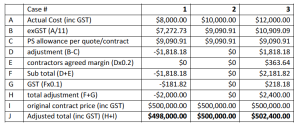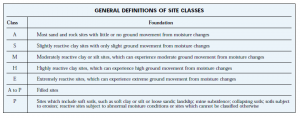What kind of service is provided in a preliminary agreement
Preliminaries (or ‘prelims’) provide a description of a project that allows the builder to assess the work required to formulate a scope and or a cost analysis.
Depending on what stage the client is at, some of the preliminary work
undertaken by Abor Developments includes:
• Detailed and Contour survey
• Identification Survey
• Feasibility study
• Soil or geotechnical report
• Engaging of designer/architect to draw up a concept and subsequently detailed design
• Engineering design
• Town planning advice
• Other specialist consultant report
• Locating existing infrastructure within the site
• Cost analysis/Quoting
A client in the very early stage of land purchasing phase, or have yet to engage a designer/architect, may require us to perform all tasks in the list. If the client has already got these documents in order, Abor Development may be required to review the documents and produce a tendering quote.
Why we don’t provide a square meterage rate.
We get asked that a lot. How much a square meter?
The reality is, for a custom built project, there is no set rate. That’s because no two projects are ever the same, no site conditions are the same, and no clients are the same.
A square meterage rate can be useful at the outset when formulating a starting budget. If the client has X amount of budget, then the size of the building is approximately that divided by the rate. This rate needs to be verified by the builder by doing a proper quote. More often the rate applied at the beginning of the design process is different to the ultimate cost.
A proper quote requires the builder to fully understand the plan, the scope of work, site condition, and time constraint. Like building lego pieces, each component is priced accordingly before assembled to produce the final figure.
Other builders provide a free quote, why do you charge a fee?
In order for a quote to be meaningful, it has to be accurate, contain clear and detailed information for both parties. An accurate quote takes a significant amount of time and money to prepare as each project is different in scope and site conditions.
It is easy to get a free quote, but those builders will not want to spend the time or effort. They can apply a square meterage rate or low ball the quote and make up their margin by lowering standard or adding extras during the build. Too often the owner engages the lowest cost builder because it is hard to understand the quote. What sounds like a good deal in the beginning can end up more costly or project just fails to achieve the desired outcome.
A paid service allows us to spend more time to investigate deeper. In particular for renovation work, multiple site visits and confirmation may be required. If we are willing to enter into an agreement with you, we are committed to producing a quality quote with all the scope assessed,
unforeseeable items allowed. We also acknowledge that if we do not win the job, our expenses will NOT be recouped from the fee we charge. During our initial consultation, we will estimate if the owner’s budget is workable. If we believe there is a mismatch, we will not offer this service.
What documents are required for a quote?
If we are provided with accurate and detailed documentation, the quote produced will be precise. For a typical project, 4 week turn around can be expected.
On the other hand, if the document is lacking, the quoting process can be done in a couple of days. This is often the case if the client is seeking an estimate during the design process. A basic concept drawing can be used provided that the client understands accuracy will be poor.
Ideally, a detailed set of architectural drawings, engineering design, soil test report, schedule of finishes, and fitting will be a basic minimum requirement.
How much do you charge for a quote?
The fee ranges between $275 for an estimate to $3,300 depending on the
complexity and size of the job.
What is the difference between a Bill of quantity(BoQ) provided by a Quantity Surveyor (QS) and a builder’s quote?
For a custom build project over $800,000, it is normal practice to engage the service of a Quantity Survey (QS) and work of Bill of Quantities (BoQ) early in the design process. The main purpose of a BoQ is to itemise and define a project so that all tenderers are preparing their price and submission on the same information.
It is not uncommon to find that the quotes from builders differ to the BoQ
report, this can be due to:
• Tendering builder’s capacity and workload in their pipeline
• Quality of the trades that the builder employ
• General market conditions at the time of tender
• Builder’s different assessment of the project risk
Each builder has a different assessment to the project risk and applies a different methodology to run the project. Abor Developments ensures all projects we delivered are tested through our rigorous quality assurance program before it is handed over. We have developed systems and procedures to allow a consistent level quality.
What are Prime Cost (PC) and Provisional Sums (PS)
To make the quote/contract as accurate as possible, you need to define what exactly is going to be included down to details such as what light bulb you are going to use. Sometimes, that is not possible at the time of quoting or contracting. There are two common terms used to allow for such variables.
Prime Cost Item (PC):
Is an allowance made in a tender or contract for the supply and delivery only of an item or items of material (e.g. taps, baths, light fittings etc.) that have not been selected at the time of tender or before the contract is signed or for which the Contractor was not able to provide a fixed price on entering the contract.
The Proprietor/Owner would normally make the final selection of the item, which is subject to a PC allowance.
Provisional Sum (PS):
Is an allowance made in a tender or contract for particular work which could not be finalised before tendering or signing a contract and which includes the total cost of the supply and installation (e.g. joinery, landscaping, air conditioning, rock removal).
Where Prime Cost Items (PC’s) and Provisional Sum (PS) allowances have to be shown in a tender or contract document, the amount shown should be inclusive of GST. e.g.:
• Tile allowance PC $35/m2 (inclusive of GST)
• Landscaping Provisional Sum $10,000 (inclusive of GST)
How PC and PS can affect the contract price
Unlike a variation, PC and PS are adjustments to a contract. If you want a water tight contract, it is better to have as little PC and PS as possible, making the builder carry all the risk of supplying the items.
If you want to share some of that risk, having an agreed PS or PC can work in your favour. A good example is site cut where it is difficult to work out how much soil will be excavate and carting off the excess spoil due to dump location, traffic conditions of the day.
This example shows agreed PS allowance of $10,000 (GST inc) and the total cost to cut the site in 3 different scenarios: Work is done less than the allowance at $8000, work is done as per allowance $10,000 and work is done for more than the allowance $12,000.

What is Identification Survey, why do I need one?
A survey which is required for the purpose of identifying existing buildings and improvements on a parcel of land is referred to as an Identification Survey or just Ident. It may only be undertaken by a Registered Surveyor.
It is always recommended to engage a Surveyor for an Ident survey when you are purchasing a property. Your solicitor will normally obtain an Ident report as a matter of course. He does so to protect you against any problems which can only be detected by a Surveyor. The Vendor Disclosure Legislation requires obligatory warranties and other statutory information from a vendor of the property. The Ident report can supply other required information and speed up the sale.
Through your Ident Survey you can be sure that you are not buying any problems that may make the property difficult to sell in the future or create anxiety with neighbours or public authorities before you even move in. More importantly, you are sure that you are buying the property that you have been shown and whether or not the property has any defects which may devalue it.
A Surveyor measures the site involved to determine the location of buildings on or adjacent to the land and any fences present. He will check for the existence of Easements (for drainage, etc.), Covenants and Restrictions on land use, and whether or not the subject land complies with the terms of these conditions. The Surveyor pays special attention to any encroachments by or upon the land or upon any Easements. In the instance of a residence the Surveyor will report on the distances of the walls or eaves and gutters from the side boundary of the land.
Source: Consulting survorys NSW
http://www.acsnsw.com.au/content/157/identification-surveys.aspx
What is Contour and Detail survey
Detail surveys are a basic prerequisite for building and land development. In most cases, the purpose of detail surveys is to indicate features on, and adjacent to, a property.
There are a number of site features and levels required by architects and planners. A topographic survey is a vital component of a successful development application for any development of your land.
Features of general detail surveys include:
o Levels & contours related to Australian Height Datum (AHD)
o Tie into cadastral reference marks & plot approx boundary on plan
o Field survey of site detail & features
o Field location of visible services
o Spot levels & contours over site
o Detail of significant trees on site over 0.2 diameter trunk
o Note of retaining walls, changes of grade etc onto adjoining sites
o Location of existing and adjoining houses/structures and floor and apex levels
o Pickup of road & kerb details at site to crown
o Place site level datum
Dial before you dig searches
Projects involving excavation will require an assessment to find out what services are underground around your property. Common searches include:
• Telecommunication location
• Gas lines location
• Sewer main and water supply lines
• Storm water main
• Underground electricity supply
Abor Developments can advice if there are problems connecting your house to the mains, common problems can be
• Unavailability connection to the sewer main or sewer main,
• Man hole located on your block
• Unavailability of storm water main for legal point of discharge
Town planning and overlay constraint
Part of the preliminary searches will involve extracting information from council regarding your property. Most of these searches are done through publicly available data. Abor Development can help you make sense of the search result. We pay attention to these common constraints:
• Zoning of your property
• If the old house is protected if you are seeking to knockdown and rebuild
• If the property is affected by flood, or is in the overland flow path
• If there are protected vegetation
• Heritage listing
• Bush fire zoning
• Indicative contour of the site
The result will determine if we need to call on other specialist consultants such as a town planner, or hydraulic engineers.
This service can only be offered for properties within Brisbane City Council
Soil Testing and why do I need it
The types of soil usually present under the top soil in land zoned for residential building can be split into two approximate groups – granular and clay. Quite often, the foundation soil is a mixture of both types. The general problems associated with soils having granular contents are usually caused by erosion. Clay soils are subject to saturation and swell/shrink problems.
Soil classification for a given area can be obtained by getting a geotechnical report (or soil test report). As most building suffering movement problems are founded on clay soils, there is an emphasis on classification of soils according to the amount of swell and shrinkage they experience with variation of water content. The table below is Table 2.1 from AS 2870, the Residential Slab and Footing Code.i

i CSIRO BTF18 Foundation Maintenance and Footing Performance: A Homeowner’s guide



